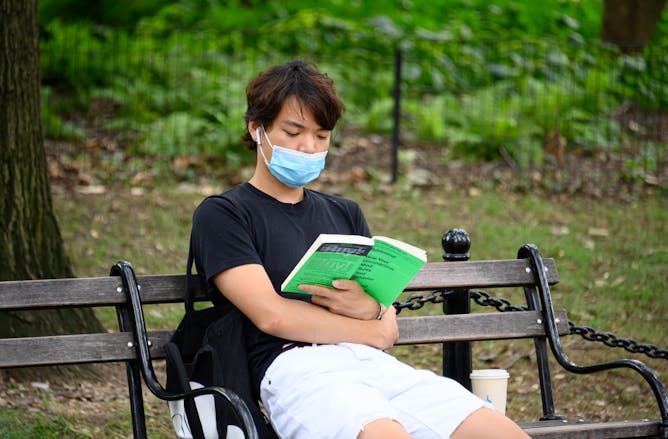|
Books and dolls. Those two items are pretty much mainstays in young children’s classrooms and bedrooms throughout the United States. But for children of color, those items – and how children interact with them – warrant a closer look to see if racism has seeped into kids’ educational and play spaces through these otherwise harmless objects.
That’s what I took away from a piece authored by Toni Sturdivant, an early childhood specialist, and another written by Lindsay Pérez Huber, who studies racial inequities in education. In both
articles, the scholars reveal how heartbreaking experiences with their own young children led them to research how racism can be found in children’s play and children’s literature. Both articles were among the most popular education stories in 2021.
Also well read were articles about Amanda Gorman’s poetry, why we remember more when we read something in print versus digitally, and how marijuana affects academic performance.
|

What it means when Black children prefer white dolls.
commerceandculturestock/Moment via Getty Images
Toni Sturdivant, Texas A&M University-Commerce
A researcher recreates a famous 1940s doll experiment to probe how Black preschool children view race and themselves – and finds not much has changed.
|

Children’s books need better representation of people of color.
Ariel Skelley/Getty Images
Lindsay Pérez Huber, California State University, Long Beach
Books can help children develop a sense of identity. But when characters of color are portrayed negatively, that can send a wrong message to kids.
|

Marijuana use among college students during the pandemic reached record highs, data show.
wildpixel via Getty Images
Jason R. Kilmer, University of Washington; Christine M. Lee, University of Washington
In their quest to feel high and relax, college students who use marijuana may be setting themselves back, research consistently shows.
|

American poet Amanda Gorman reads a poem during the 59th presidential inauguration at the U.S. Capitol on Jan. 20, 2021.
Patrick Semansky/POOL/AFP via Getty Images
Kathleen M. Alley, Mississippi State University; Mukoma Wa Ngugi, Cornell University; Wendy R. Williams, Arizona State University
The rise in the popularity of Amanda Gorman, the nation’s first National Youth Poet Laureate, represents a prime opportunity for educators to use spoken word poetry in the classroom.
|

When mental focus and reflection are called for, it’s time to crack open a book.
Noam Galai/Getty Images
Naomi S. Baron, American University
People tend to think of digital media as entertainment, so they devote less mental effort than when they’re reading a printed book.
|

Recent college graduates owed an average of nearly $30,000 in student loans in 2019.
lightspeedshutter/iStock via Getty Images Plus
Kate Padgett Walsh, Iowa State University; Dalié Jiménez, University of California, Irvine; Raphaël Charron-Chénier, Arizona State University
Student loan debt can affect not only the financial health of recent grads but also their mental and emotional health. Three scholars weigh in on the greater costs student loans can have on borrowers.
|